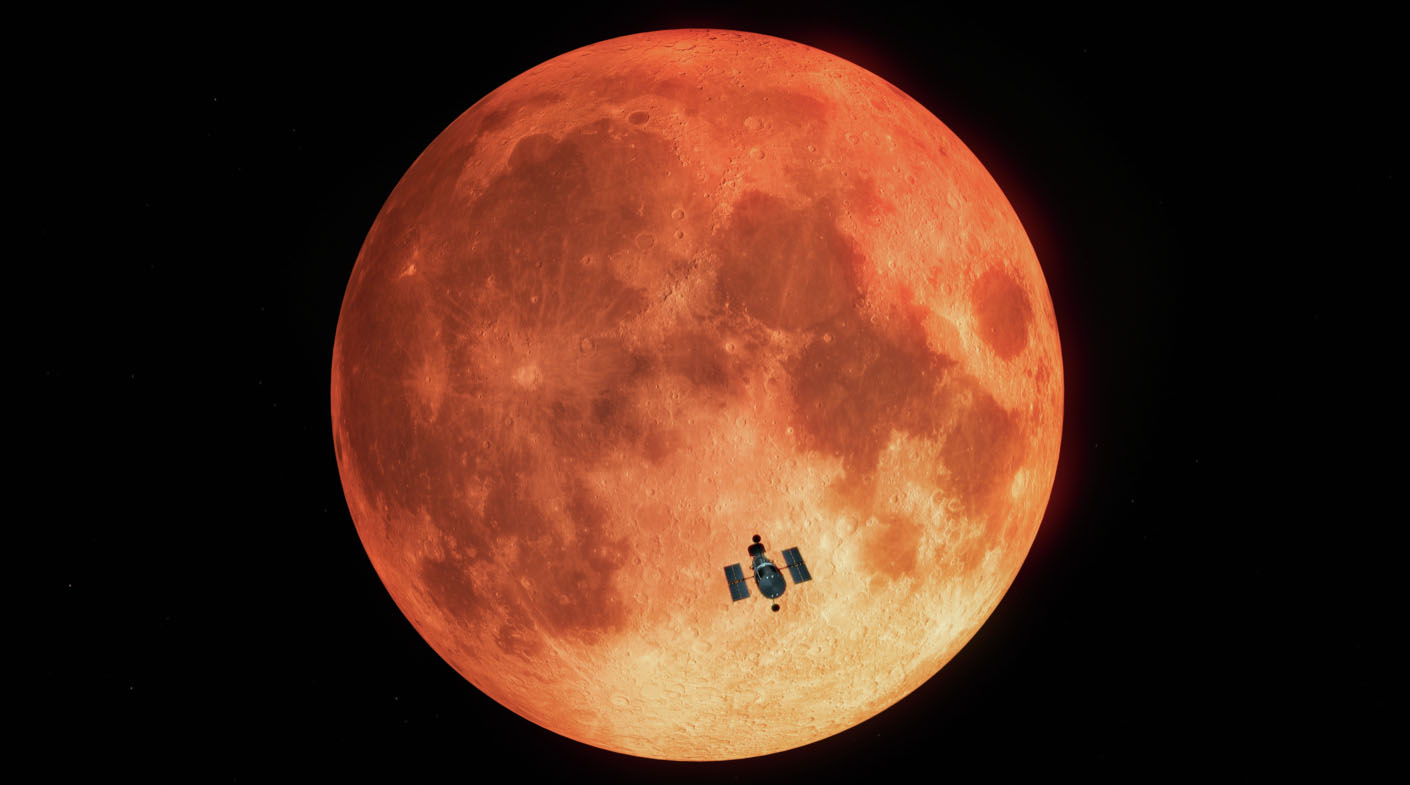STScI: Hubble Uses Earth as a Proxy for Identifying Oxygen on Potentially Habitable Planets Around Other Stars

Hubble Observes the Total Lunar Eclipse (Artist’s Illustration) Taking advantage of a total lunar eclipse in January 2019, astronomers using NASA’s Hubble Space Telescope have detected ozone in Earth’s atmosphere. This method serves as a proxy for how they will observe Earth-like planets transiting in front of other stars in search of life. Credits: M. Kornmesser (ESA/Hubble), NASA, and ESA
Hubble Uses Our Moon to Probe Earth’s Atmosphere During a Lunar Eclipse
Taking advantage of a total lunar eclipse, astronomers using NASA’s Hubble Space Telescope have detected Earth’s own brand of sunscreen – ozone – in our atmosphere. This method simulates how astronomers and astrobiology researchers will search for evidence of life beyond Earth by observing potential “biosignatures” on exoplanets (planets around other stars).
Hubble did not look at Earth directly. Instead, the astronomers used the Moon as a mirror to reflect sunlight, which had passed through Earth’s atmosphere, and then reflected back towards Hubble. Using a space telescope for eclipse observations reproduces the conditions under which future telescopes would measure atmospheres of transiting exoplanets. These atmospheres may contain chemicals of interest to astrobiology, the study of and search for life.
Though numerous ground-based observations of this kind have been done previously, this is the first time a total lunar eclipse was captured at ultraviolet wavelengths and from a space telescope. Hubble detected the strong spectral fingerprint of ozone, which absorbs some of the sunlight. Ozone is important to life because it is the source of the protective shield in Earth’s atmosphere.
On Earth, photosynthesis over billions of years is responsible for our planet’s high oxygen levels and thick ozone layer. That’s one reason why scientists think ozone or oxygen could be a sign of life on another planet, and refer to them as biosignatures.
“Finding ozone is significant because it is a photochemical byproduct of molecular oxygen, which is itself a byproduct of life,” explained Allison Youngblood of the Laboratory for Atmospheric and Space Physics in Boulder, Colorado, lead researcher of Hubble’s observations.
